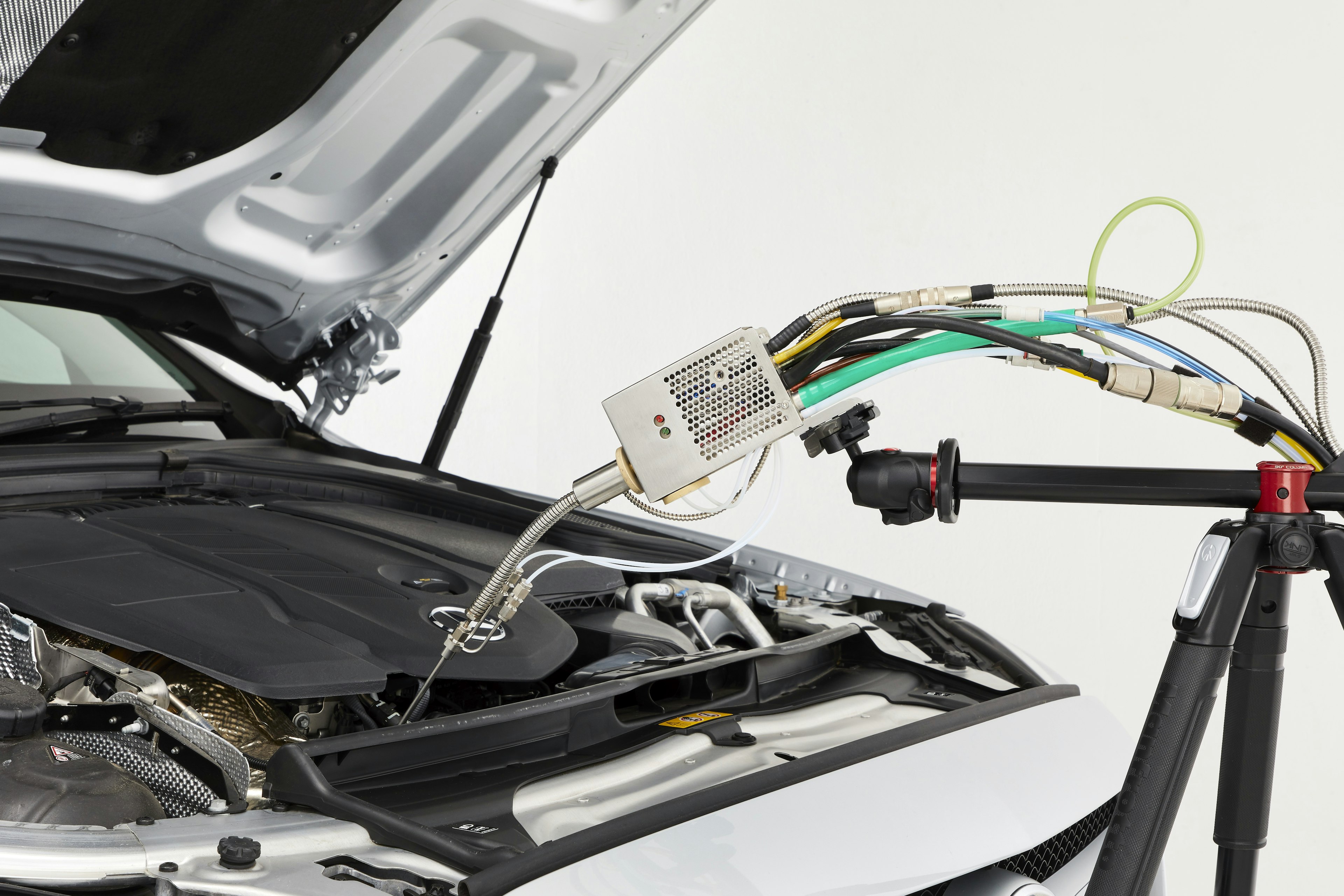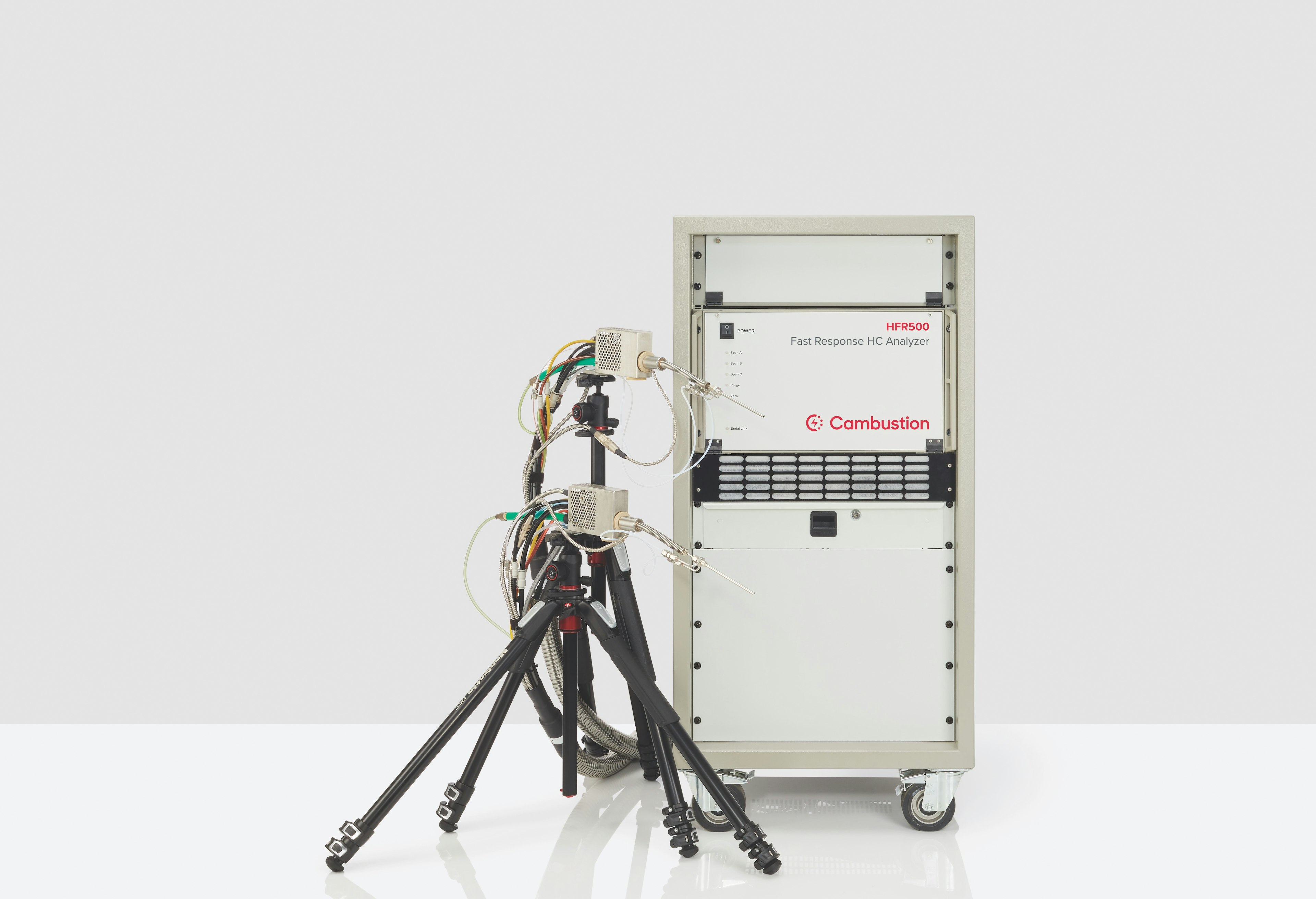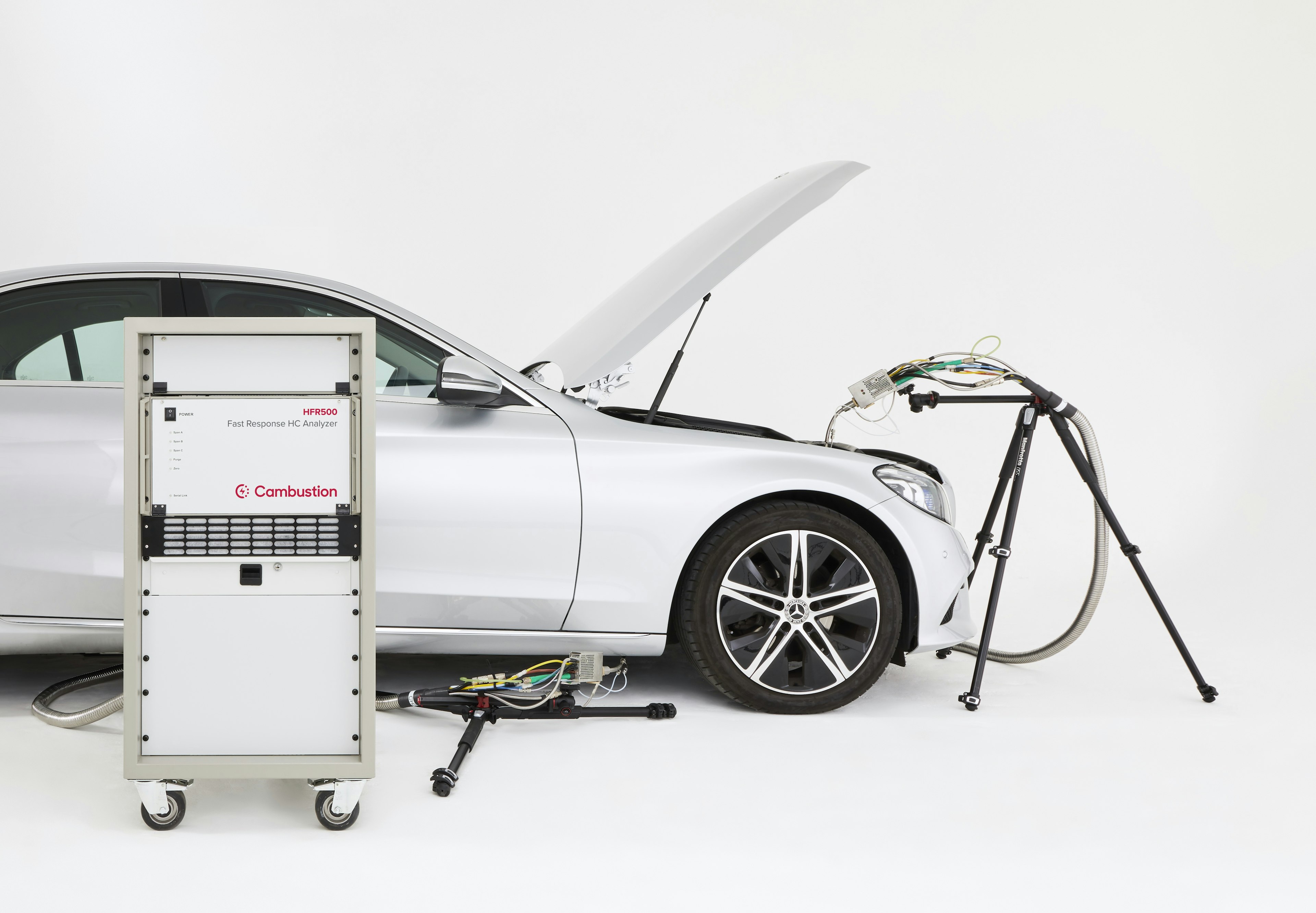HFR500 | Flame Ionisation Detector
Conventional FID 1-2 second response time
Cambustion HFR500 1ms response time
The Flame Ionisation Detector (FID) is the industry-standard method of measuring engine exhaust hydrocarbons. Conventional FIDs have response times of 1-2 seconds, and are typically used to measure “bag emissions” where the concentration changes very slowly.
A need for fast emissions analysers
During the 1-2 seconds it takes a conventional FID to respond, an engine will undergo many firing cycles. The conditions inside the combustion chamber can vary significantly between successive firing cycles- particularly when the engine conditions are changing rapidly such as during engine start or speed/load transients. The Cambustion HFR500 has a time response as low as 0.7ms T10-90. This allows the HFR500 to distinguish between two adjacent firing cycles, and even offer information about the variation in HC concentration during a single exhaust stroke.
Benefits of fast emissions analysers
Accurate measurement of exhaust emissions brings valuable insights into engine operation, and assists calibration engineers in reducing the engine out emissions. This can assist in emissions compliance while reducing after-treatment costs.
The fast FID (sometimes known as an fFID) is carefully designed and calibrated to be linear to well above misfire HC levels (e.g. 42,000 ppm C₃ for a complete stoichiometric misfire in a gasoline engine) so that accurate concentrations during these important events can be recorded.
HFR500 Brochure
For more information download a brochure. Please contact Cambustion for more information and prices.
Applications
For all gasoline engines (port- or direct-injection) the most challenging phase of operation (from an emissions viewpoint) is the cold start. (Download a pdf presentation about gasoline cold start calibration)
The cold catalyst is initially unable to convert any of the engine-out emissions, and these therefore reach the tailpipe. Since in a cold gasoline engine the vaporization of the fuel is poor, additional fuel (i.e. more than stoichiometric ratio alone requires) must be injected during crank, to achieve an ignitable mixture in the cylinder. The rapid heat release caused by the first firing cycle leads to a rapid vaporization of this excess liquid fuel, and the second firing cycle may easily be rich, leading to high concentrations of unburnt hydrocarbons in the exhaust.
The fast FID's unique ability to measure cycle-by-cycle HC emissions during and after start allows engineers to optimize engine calibration for cold start; maintaining startability while minimizing these highly significant HC emissions. The new FID600 has a engine position port for VRS or Hall effect sensors, to give crank angle resolved emissions.
On gasoline engines, the use of an evaporative emissions canister to trap the HC vapours from the fuel tank requires the canister to be purged in to the intake system. Normally, this is scheduled to occur a few minutes after engine start, but can lead to significant levels of additional fuel entering the combustion chambers. With some additional accessories, it is possible to use the fast FID to sample from the intake (even downstream of the throttle) and measure the actual [HC] which are contributing to the engine’s fuelling. Similar techniques can be used for fuel emerging from the crankcase blow-by gases via the crankcase ventilation system.
Alternative fuels such as ethanol (or a mix of gasoline and ethanol) have different vaporization characteristics and require additional calibration for cold start.
Once the engine is running, transients in speed and load can lead to hydrocarbon "spikes" (brief periods of high emission), since the airflow into the engine can change more quickly than the fuel. Conventional analysers with time responses of around a second can not resolve these events, but the FID600 and HFR500 offer valuable data about the exhaust HC concentration, on a cycle-by-cycle and cylinder-by-cylinder basis.
To read more about the application of fast HC analysers to engine start and fuel puddle studies visit our Spark Ignition Engines page.
For more information on these and other applications please see Applications & Sample data.
Key Application Notes
| Title | Data Type | Download File | Size | Last Updated | |||||
|---|---|---|---|---|---|---|---|---|---|
| Title | Combustion instability detection during catalyst heating phase of GDI cold start | Data Type | Application note | Download File | hfr09v01-gdi-cold-start-catalyst-heating-strategy-combustion-instability.pdf | Size | 556.60 KB | Last Updated | |
| Title | Flame Traverse Sampling | Data Type | Application note | Download File | cld06v01-fast-gas-analysis-traversing-a-methane-flame.pdf | Size | 1.69 MB | Last Updated |
Need more information? Connect to an expert


